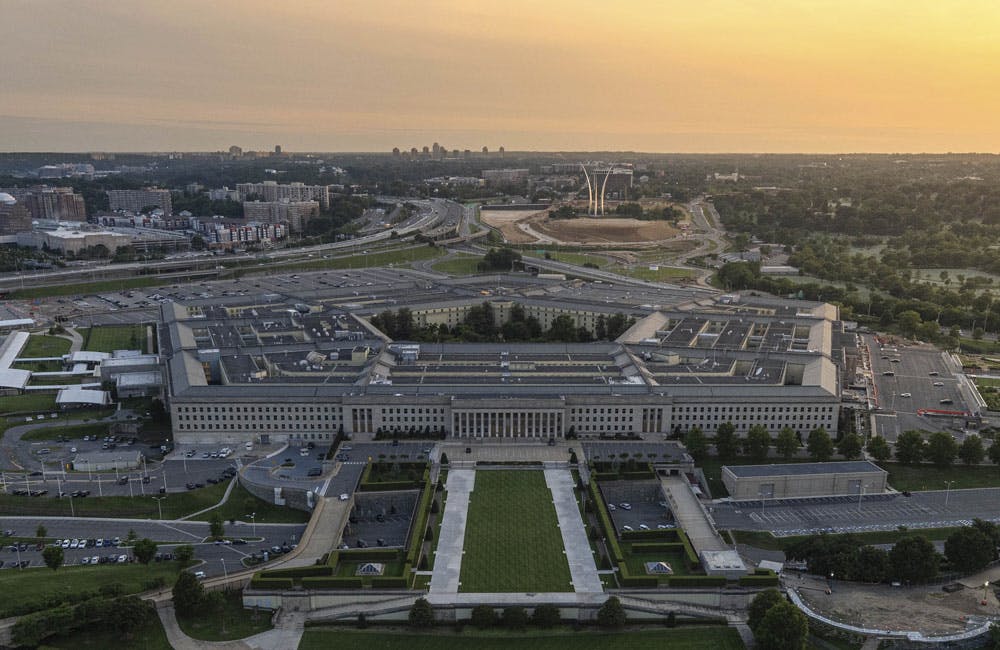How Satellite Technology Can be a Force Multiplier for the Marines
Satellite communications is a “force multiplier” for the Marine Corps as it pursues its CJADC2 strategy in remote areas.

Space may be the final frontier of human exploration, but for military services, it is a new landscape. Data transmission through space links is critical for the modern military. As Lt. Gen. Matthew Glavy, deputy commandant for information at the Marine Corps, put it in December: it’s “no space, no chance.”
New capabilities in orbit provide more communications and connectivity capabilities to troops on the ground. For the Marine Corps, satellite technology is an “enabling capability,” said Marine Chief Warrant Officer 4 Emedin Rivera from the Deputy Commandant for Information Command, Control, Communications and Computers (DCI C4).
Satellites are such a critical technology because of their ability “to connect disaggregated units across a large swath of an operating area. Largely, those areas are immature in terms of infrastructure power, immature in terms of telecom infrastructure, like cell towers and things like that. Environments where we have significant challenges in terms of connectivity, satellite communications are the core enabler to be able to get information exchange forward into the battle space,” Rivera said.
He pointed to real world examples like the Russia-Ukraine war to illustrate how satellite technology can be effective on the battlefield. Rivera called the conflict a “sandbox of learning” for the Marines, as it has seen many satellite theories tried and tested in the field. Ukraine’s ability to refresh and replenish its connectivity quickly has significantly contributed to its ability to wage war.
“One thing is clear: prolific conductivity, ubiquitous connectivity, ubiquitous transport is something that is a force multiplier for forces [that are] highly disadvantaged, not only from a technology perspective, but also from a capacity perspective,” Rivera said.
Capabilities as a Force Multiplier
The rapid buildup of commercial satellite capabilities has been a game changer for the service. The Marine Corps has been able to take advantage of industry’s development of proliferated low-Earth orbit satellites. New satellites enable sharing terabytes of data almost instantaneously across the globe, dramatically improving the information exchange on the battlefield.
Rivera said proliferated low-Earth orbit capabilities are the most salient space-based technology, “not only from the ability to bring high throughput, low-latency links back down to Earth, but being able to launch at speed and essentially reconstitute or refresh those satellites, is a completely new way of doing business,” Rivera said. “It’s really disrupting the way we actually do business on the ground. Low-Earth orbit is absolutely a kind of force multiplier for us.”
Rivera emphasized that mobility is a core element with satellite technology. Technology and troops that rely on satellites above need to be “small form factor, small power generation dependencies — it has to be able to move, and it has to be largely self-sustainable for a period of time,” Rivera said.
Challenges With Satellite Modernization
Despite the promise of satellites, challenges around security and infrastructure threaten the usefulness of the technology. Rivera said the main challenges stem from operating in areas where infrastructure is either limited or non-existent, like over oceans or remote terrain.
“Today, we’re going to go into a place that’s largely immature across power generation to telecom communications, and we’re going to be asked to employ high-end data models and high-end data throughput communications, cloud computing and things like that, where in many cases, the only way to pull that off at the edge is going to be a beyond line of sight, over the air connectivity option, and a lot of those options are going to be in space,” Rivera said.
Security is critical for satellite communications, but Rivera said the benefits of using the technology must be weighed against any inherent risk in moving communications to interstellar levels. Rivera said the Marines, however, is not taking security for granted.
“There’s always a trade off. It’s virtually impossible to have zero risk, but we are aligning a lot of the capabilities that we’re going to have with standards like FIPS 140, zero trust architectures and other encryption best practices that we have a framework for. That has been kind of baked into a lot of the service-level agreements that we’re working,” Rivera said.
This is a carousel with manually rotating slides. Use Next and Previous buttons to navigate or jump to a slide with the slide dots
-

Defending the Cyber Domain in a Time of 'Non-Kinetic' Threats
Northcom's intelligence leader Brig. Gen. Maurizio Calabrese discussed the evolving role of defense intelligence technology.
20m watch -

OpenAI Eyes Fed Efficiency With ChatGPT Gov
The ChatGPT creator said its newest tool offers agencies generative AI on premises and aligns with Trump's call to boost federal efficiency.
5m read -

DOD Wants to Accelerate GenAI With AI Rapid Capabilities Cell
The Defense Department sunset Task Force Lima and launched a new effort for generative AI development with the AI Rapid Capabilities Cell.
4m read -

Trump Signs AI EO to Reorient Federal Tech Approach
The president signed a new AI executive order and signaled that the White House will center industry responsibility for AI leadership.
3m read








